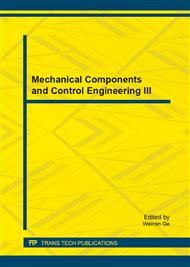p.83
p.87
p.91
p.95
p.102
p.107
p.115
p.119
p.124
Failure Analysis of Differential Pressure Transmitter Impulse Pipe in High Sulfur Purification Device
Abstract:
In this paper, metallographic examination, visual examination and scanning electron microscopy were used to analyze the perforation failure of the differential pressure transmitter impulse pipe. Macrostructure and microstructure of the hole, corrosion characteristics, and corrosion products were studied. Combined with the service conditions of natural gas pipe, relationship between the pipe material quality and the formation process of the perforation failure was determined utilizing fracture mechanics and corrosion analysis. The perforation failure may be caused by the defects and stress corrosion.
Info:
Periodical:
Pages:
102-106
Citation:
Online since:
October 2014
Authors:
Price:
Сopyright:
© 2014 Trans Tech Publications Ltd. All Rights Reserved
Share:
Citation:


